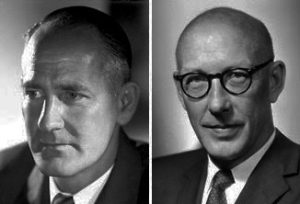 J. Craig Venter, best known for being the first to sequence the human genome in 2000, is recognized as one of the leading scientists of the 21st century. Ten years after his essential accomplishment, Venter was credited for successfully recreating “the first synthetic species” in 2010, named Mycoplasma laboratorium.
J. Craig Venter, best known for being the first to sequence the human genome in 2000, is recognized as one of the leading scientists of the 21st century. Ten years after his essential accomplishment, Venter was credited for successfully recreating “the first synthetic species” in 2010, named Mycoplasma laboratorium.
In his relentless pursuit to “understand the molecular and biological function of every gene in a cell,” Venter released the latest findings discovered in his genetics research laboratory in Southern California. The paper, entitled “Design and Synthesis of a Minimal Bacterial Genome,” was published on March 25, 2016, in the journal Science. The findings have emerged as a new genomic evolution nightmare for Craig Venter.
Major Mystery
Emily Singer, science writer for Quanta Magazine, covered Venter’s newest publication in the article entitled “In Newly Created Life-Form, a Major Mystery” – code for a new evolution nightmare.
Venter’s research team attempted to whittle down the genome of a simple bacterium, Mycoplasma mycoides, to reveal the bare-bones set of genetic instructions capable of reproducing life.
Syn3.0
The final laboratory product is now known to have the world’s most bare-bones genome. Named syn3.0 (pictured above), the organism contains just 473 genes. By comparison, the gram-negative bacterium Escherichia coli contains between 4,000 and 5,500 genes, while humans have roughly 20,000, and the fruit fly has approximately 26,000 genes. Biological complexity is unrelated to the number of genes.
“To me, the most interesting thing is what it tells us about what we don’t know,” said Jack Szostak, a biochemist at Harvard University, who was not involved in the study, in an interview with Singer. “So many genes of unknown function seem to be essential.”
While Venter’s research team originally had expected to end up with a small fraction of genes with yet an unknown identifiable function, “we were amazed and shocked,” said Venter  (pictured right) in an interview with Singer. “This is truly a stunning number,” he said.
(pictured right) in an interview with Singer. “This is truly a stunning number,” he said.
Of the 473 genes studied, the function of 149 (31% of the 473) could not be determined. Venter concludes –
“The minimal cell concept appears simple at first glance, but becomes more complex upon close inspection… Unexpectedly, it also contains 149 genes with unknown biological functions, suggesting the presence of undiscovered functions that are essential for life.”
Biological Principles
When Singer asked whether modern science has sufficient knowledge of basic biological principles, Venter replied –
“The answer is a resounding no.”
Raising the question “What’s left after trimming the genetic fat,” Singer notes, “It is unclear what the remaining 149 genes do.”
Scientists can broadly classify 70 of them based on the genes’ structure, but the researchers have little idea of what precise role the genes play in the cell. The functions of the other 79 genes are a complete mystery.
“We don’t know what they provide or why they are essential for life — maybe they are doing something more subtle, something obviously not appreciated yet in biology,” Venter said. “It’s a very humbling set of experiments.”
As Singer explains, “When scientists first began searching for such a thing 20 years ago, they hoped that simply comparing the genome sequences from a bunch of different species would reveal an essential core shared by all species. But as the number of genome sequences blossomed, that essential core disappeared.”
Evolution Nightmare
Retracing the molecular stepping stones of biological evolution is at the core of Venter’s interest. “We could reduce billions of years of evolution to maybe years or months or weeks,” he speculated.
“In theory, Venter added, “we should be able to add genes back to [syn3.0] to recapitulate key parts of evolution.”
 Venter’s syn3.0 discovery, however, underscores why the once widely popular “one gene, one enzyme” hypothesis proposed by Nobel Prize winners George Beadle and Edward Tatum (pictured left)in the early Darwinism era of the twentieth century ended as a colossal bust.
Venter’s syn3.0 discovery, however, underscores why the once widely popular “one gene, one enzyme” hypothesis proposed by Nobel Prize winners George Beadle and Edward Tatum (pictured left)in the early Darwinism era of the twentieth century ended as a colossal bust.
“In fact,” Singer notes, “there’s no single set of genes that all living things need to exist.” The shockwaves of the genomic revolution that began in the late twentieth century have essentially undermined the fundamentals of Darwinism and the Modern Evolutionary Synthesis theory.
In 2010, David Ussery, a biologist at Oak Ridge National Laboratory in Tennessee, and his collaborators compared 1,000 genomes. They found that not a single gene is shared across all of life. “There are different ways to have a core set of instructions,” Szostak suggested.
The earliest life forms, however, could not have even started with the complexity of 400 genes. “We didn’t go from nothing to a cell with 400 genes,” affirmed Szostak.
Some evolutionists contend that this type of bottom-up approach is necessary to truly understand life’s essence. “If we are ever to understand even the simplest living organism, we have to be able to design and synthesize one from scratch,” said Anthony Forster, a biologist at Uppsala University in Sweden. “We are still far from this goal.”
Syn3.0 is a new evolution nightmare for Craig Venter. The possibility of discovering evidence for a genetic mechanism of evolution by natural selection is now even more improbable.
Darwin’s dilemma intensifies.
Genesis
“The more I study science,” Albert Einstein of the Scientific Revolution found, “the more I believe God.” In a letter to a little girl named Phyllis, Einstein wrote –
“Everyone who is seriously involved in the pursuit of science becomes convinced that some spirit is manifest in the laws of the universe, one that is vastly superior to that of man.”
Evidence from molecular biology to validate the theory of evolution scientifically remains speculative.
New Evolution Nightmare is a Molecular Biology article.
Darwin Then and Now is an educational resource on the intersection of evolution and science, highlighting the ongoing challenges to the theory of evolution.
Move On
Explore how to understand twenty-first-century concepts of evolution further using the following links –
-
- The Understanding Evolution category showcases how varying historical study approaches to evolution have led to varying conclusions. Subcategories include –
- Studying Evolution explains how key evolution terms and concepts have changed since the 1958 publication of The Origin of Species.
- What is Science explains Charles Darwin’s approach to science and how modern science approaches can be applied for different investigative purposes.
- Evolution and Science feature study articles on how scientific evidence influences the current understanding of evolution.
- Theory and Consensus feature articles on the historical timelines of the theory and Natural Selection.
- The Biography of Charles Darwin category showcases relevant aspects of his life.
- The Glossary defines terms used in studying the theory of biological evolution.
- The Understanding Evolution category showcases how varying historical study approaches to evolution have led to varying conclusions. Subcategories include –


